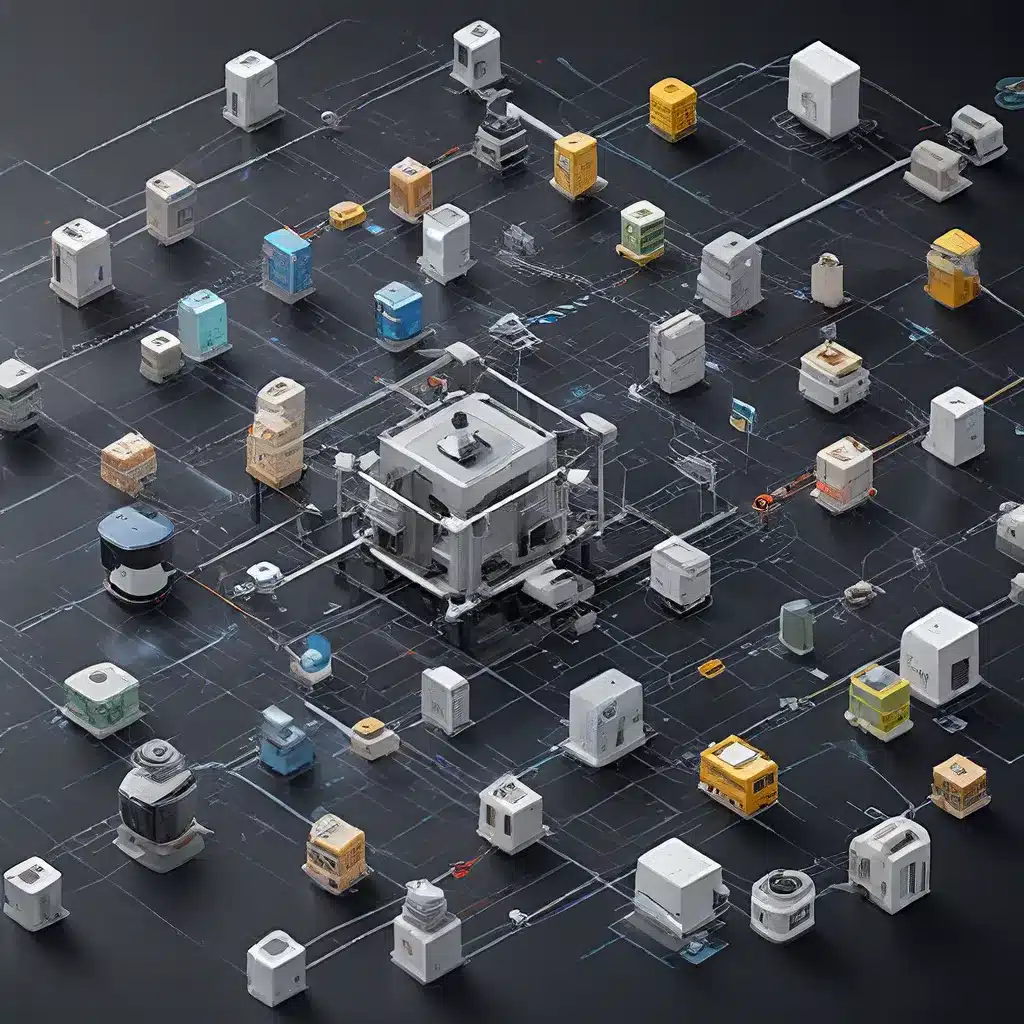
In the rapidly evolving landscape of the Internet of Things (IoT), sensor networks have emerged as a pivotal component, enabling intelligent data collection, processing, and decision-making across a wide range of applications. As IoT devices become more ubiquitous, the need for autonomous adaptation and optimization of these systems has become increasingly crucial. Distributed Reinforcement Learning (DRL) presents a promising approach to address this challenge, empowering IoT devices with the ability to adapt and optimize their behavior in dynamic environments.
Navigating the Complexities of Sensor Network Design
Designing efficient and resilient sensor networks is no easy feat. These systems must contend with a myriad of factors, from network topology and resource constraints to security vulnerabilities and energy management considerations. Sensor nodes must be strategically deployed, interconnected, and programmed to seamlessly collect, transmit, and process vast amounts of data, often in remote or harsh environments.
One of the key design considerations in sensor networks is the network topology. Depending on the specific application and deployment scenario, sensor nodes can be organized in various topologies, such as star, mesh, or hierarchical configurations. Each topology offers its own advantages and trade-offs in terms of scalability, reliability, latency, and energy efficiency. For instance, a mesh topology may provide better redundancy and fault tolerance, while a hierarchical approach can optimize resource utilization and data aggregation.
| Topology | Scalability | Reliability | Latency | Energy Efficiency |
|---|---|---|---|---|
| Star | Moderate | Moderate | Low | Moderate |
| Mesh | High | High | High | Low |
| Hierarchical | High | Moderate | Moderate | High |
Embracing Autonomous Adaptation with Distributed Reinforcement Learning
As sensor networks continue to grow in complexity, the need for autonomous adaptation becomes increasingly critical. Distributed Reinforcement Learning (DRL) offers a promising solution, enabling IoT devices to learn and optimize their behavior in response to dynamic environmental conditions and changing requirements.
At the core of DRL is the reinforcement learning paradigm, where agents (in this case, IoT devices) learn to make optimal decisions by interacting with their environment and receiving rewards or penalties for their actions. In a distributed setting, these agents collaborate and share their experiences, allowing the entire network to collectively learn and adapt.
One of the key advantages of DRL is its scalability. As the number of IoT devices in a network grows, the distributed nature of DRL ensures that the learning process can be efficiently scaled, without relying on a centralized control system. This decentralized approach not only improves fault tolerance but also reduces the burden on individual devices, making the system more energy-efficient and resilient.
Enhancing IoT Security with Distributed Reinforcement Learning
Sensor networks are not immune to security threats, and IoT devices are particularly vulnerable to a wide range of cyberattacks, ranging from unauthorized access to data breaches and denial-of-service (DoS) attacks. Conventional security measures often struggle to keep pace with the rapidly evolving threat landscape, underscoring the need for adaptive and intelligent security solutions.
Distributed Reinforcement Learning can play a crucial role in enhancing the security of IoT ecosystems. By continuously monitoring the network, DRL-based agents can detect and respond to anomalous activities or potential threats in real-time. These agents can learn from past security incidents, adapting their detection algorithms and mitigation strategies to become more effective over time.
Moreover, DRL-based approaches can also be leveraged to optimize security configurations and resource allocation, ensuring that limited resources (such as computational power or energy) are efficiently utilized to maintain a high level of security while minimizing operational costs.
Optimizing Energy Management with Distributed Reinforcement Learning
Energy management is a critical concern in sensor networks, as IoT devices are often battery-powered or have limited energy resources. Inefficient energy usage can lead to premature device failure, network disruptions, and increased maintenance costs.
Distributed Reinforcement Learning can play a pivotal role in optimizing energy management within sensor networks. DRL-based agents can learn to dynamically adjust their power consumption and resource utilization based on factors such as device battery levels, network traffic patterns, and environmental conditions.
For instance, DRL-based algorithms can enable adaptive duty cycling, where devices enter a low-power sleep mode when not actively required, and wake up only when necessary to perform specific tasks. This approach can significantly extend the operational lifetime of IoT devices, reducing the frequency of battery replacements or recharging.
Furthermore, DRL can also be used to optimize data transmission and routing protocols, ensuring that data is efficiently transmitted across the network while minimizing energy consumption. By continuously learning and adapting to changing conditions, DRL-based systems can achieve near-optimal energy usage, contributing to the overall sustainability and cost-effectiveness of sensor network deployments.
The Future of Autonomous IoT Adaptation
As the IoT landscape continues to evolve, the integration of Distributed Reinforcement Learning into sensor network design will become increasingly pivotal. This innovative approach not only enhances the autonomy and adaptability of IoT devices but also addresses critical challenges in the areas of security, energy management, and resource optimization.
By empowering IoT devices with the ability to learn and adapt, DRL-based solutions pave the way for a new era of resilient, efficient, and self-optimizing sensor networks. As the technology continues to mature, we can expect to see a wide range of transformative applications that harness the power of autonomous adaptation, from smart cities and industrial automation to environmental monitoring and healthcare systems.
The future of sensor networks and IoT lies in the seamless integration of intelligence and adaptability, and Distributed Reinforcement Learning is poised to play a pivotal role in realizing this vision. As researchers and industry leaders continue to push the boundaries of this exciting field, the potential for innovative and impactful IoT solutions only continues to grow.